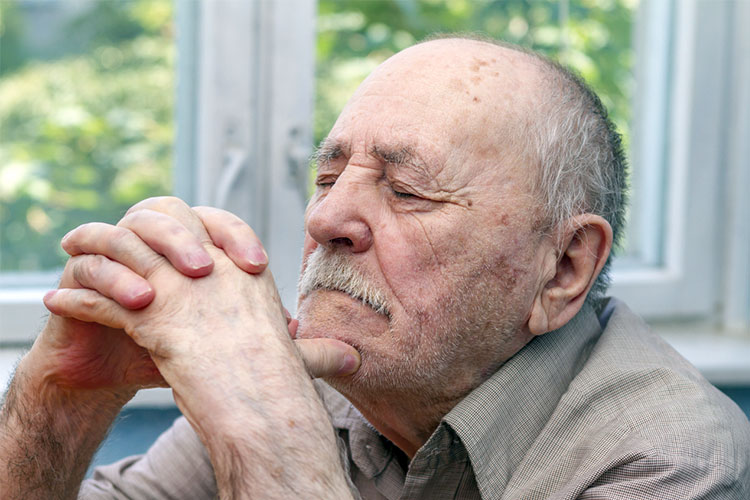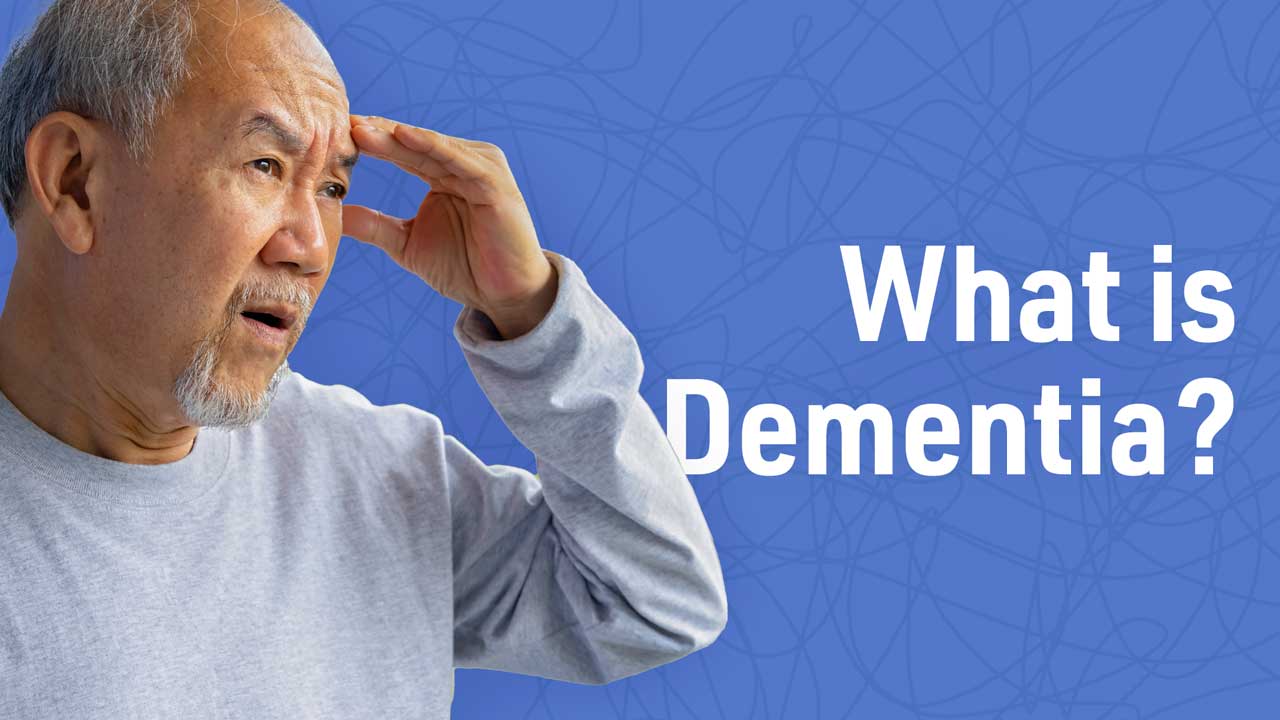Dementia is the term used for a collection of symptoms caused by disorders affecting the brain - it is not one specific disease.
Dementia should not be considered a ‘normal’ part of ageing. Although it’s more common after 65 years of age, it can happen to anybody (Dementia Australia 2024a).
Under the Diagnostic and Statistical Manual of Mental Disorders (DSM-5), there are six main cognitive domains that may be affected by dementia. They are:
- Complex attention
- Executive function
- Learning and memory
- Language
- Social cognition
- Perceptual-motor function.
(Dementia Australia 2023a)
It’s essential that you have an awareness of dementia, as it is a growing epidemic in Australia. There are an estimated 421,000 people currently living with dementia in Australia, and this is only expected to increase in the future (Dementia Australia 2024b).
This article will outline types of dementia; signs and symptoms; presentation; treatment; and prevention, and will provide you with material for further research.

Dementia in Numbers
- Dementia is the second leading cause of death in Australia.
- It’s the leading cause of death in Australian women.
- Aboriginal and Torres Strait Islander people are three to five times more likely to develop dementia compared to non-Indigenous Australians.
- Almost 1.6 million people in Australia are involved in the care of someone living with dementia.
- 54% of permanent aged care residents in Australia are living with dementia.
(Dementia Australia 2024b; AIHW 2024)
Types of Dementia
- Alzheimer’s disease: A degenerative illness that attacks the brain. It’s the most common type of dementia.
- Vascular dementia: A disease in the blood vessels of the brain.
- Lewy body disease: An umbrella term for the formation of clumps in the brain called Lewy bodies; it includes Parkinson’s disease.
- Frontotemporal dementia: Degeneration to one or both of the frontal and temporal lobes of the brain.
- Dementia caused by Huntington’s disease: An inherited degenerative brain disease.
- Alcohol-related dementia: Includes Wernicke-Korsakoff Syndrome; damage occurs primarily to the area of the brain responsible for short-term memory.
- Human immunodeficiency virus-associated dementia.
- Creutzfeld-Jakob disease: A rare and fatal brain disorder caused by a protein particle called a prion.
(Better Health Channel 2014a)
Stages of Dementia
There is a generally recognised trajectory to the progression of dementia. It is characterised by the following three stages:
- Mild/early-stage dementia: A person is able to carry out daily tasks without assistance, but a number of areas within personal care and memory are observed as showing deficits.
- Moderate/middle-stage dementia: These deficits have become more obvious and severe, and the level of assistance needed to function in and out of the home is steadily increasing.
- Severe/late-stage dementia: By this stage, the person is almost completely dependent on the care and supervision of other people.
(Dementia Australia 2024a)
Early Signs and Symptoms of Dementia
- Progressive and frequent memory loss
- Confusion
- Reduced concentration
- Problems with spatial skills
- Problems with language
- Misplacing things
- Difficulty with distance and location
- Difficulty with abstract thinking
- Loss of initiative
- Altered mood and/or personality
- Apathy and withdrawal
- Loss of ability to perform everyday tasks.
(Dementia Australia 2023b; Better Health Channel 2014b)
Diagnosing Dementia
Dementia may present similarly to other conditions and symptoms, including depression, delirium and medication interactions (Dementia Australia 2023a).
Diagnosis may involve:
- Taking the patient’s medical history
- Laboratory tests (e.g. blood and urine tests)
- Cognitive testing
- Brain imaging
- Psychiatric assessment
- Consultation with a neurologist, geriatrician or Cognitive, Dementia and Memory Service (CDAMS).
(Better Health Channel 2014b)
Dementia Risk Factors

Some people are at increased risk of developing dementia for reasons that are out of their control, such as age, genetics or incurring a brain injury.
There are, however, many modifiable risk factors that can be changed. These include:
- High cholesterol
- Diabetes
- Hypertension
- Cardiovascular disease
- Smoking and drug use
- Poor diet
- Excessive consumption of alcohol
- Depression
- Low cognitive engagement
- Social isolation
- Physical inactivity/obesity
- Poor sleep habits.
(Dementia Australia 2024c; Alzheimer Society of Canada 2023)
Treating Dementia
Ongoing support is critical for people living with dementia. As a care worker or healthcare professional, you are in a unique position to empower patients and their loved ones with relevant information that will help them to understand and manage their condition, for both the immediate and distant future. Your intervention could considerably improve their quality of life (Woodward 2015).
Pharmacological therapies may be available to patients. Additionally, referral to non-pharmacological therapies may be appropriate. Examples include:
- Psychological support
- Behavioural management
- Other therapies, such as validation therapy, reminiscing, cognitive behavioural therapy, psychotherapy, and music, art and pet therapy
(Woodward 2015; Healthdirect 2022)
While there is no known cure for dementia, there are medicinal options that are able to slow the progression of the illness and, in some cases, ameliorate the symptoms (Woodward 2015).

Test Your Knowledge
Question 1 of 3
What is the most common type of dementia?
Topics
Further your knowledge
References
- Alzheimer Society of Canada 2023, Risk Factors, Alzheimer Society of Canada, viewed 2 September 2024, https://alzheimer.ca/sites/default/files/documents/Risk-factors_Alzheimer-Society-Canada.pdf
- Australian Institute of Health and Welfare 2024, Dementia in Australia, Australian Government, viewed 2 September 2024, https://www.aihw.gov.au/reports/dementia/dementia-in-aus/contents/summary
- Better Health Channel 2014a, Dementia - Different Types, Victoria State Government, viewed 2 September 2024, https://www.betterhealth.vic.gov.au/health/conditionsandtreatments/dementia-different-types
- Better Health Channel 2014b, Dementia - Early Signs, Victoria State Government, viewed 2 September 2024, https://www.betterhealth.vic.gov.au/health/ConditionsAndTreatments/dementia-early-signs
- Dementia Australia 2023a, Assessment and Diagnosis of Dementia, Dementia Australia, viewed 2 September 2024, https://www.dementia.org.au/professionals/assessment-and-diagnosis-dementia
- Dementia Australia 2023b, Early Warning Signs, Dementia Australia, viewed 2 September 2024, https://www.dementia.org.au/brain-health/early-warning-signs
- Dementia Australia 2024a, About Dementia, Dementia Australia, viewed 2 September 2024, https://www.dementia.org.au/about-dementia
- Dementia Australia 2024b, Dementia Facts and Figures, Dementia Australia, viewed 2 September 2024, https://www.dementia.org.au/about-dementia/dementia-facts-and-figures
- Dementia Australia 2024c, Reducing Your Risk of Dementia, Dementia Australia, viewed 2 September 2024, https://www.dementia.org.au/risk-reduction
- Healthdirect 2022, Dementia – An Overview, Australian Government, viewed 2 September 2024, https://www.healthdirect.gov.au/dementia-overview
- Woodward, M 2015, Debunking Dementia Myths, Dementia Australia, online video, viewed 2 September 2024, https://www.youtube.com/watch?v=Ts41ErswKVY
 New
New 

